How to Secure Telecom Wiring with Cable Ties
August 1, 2025
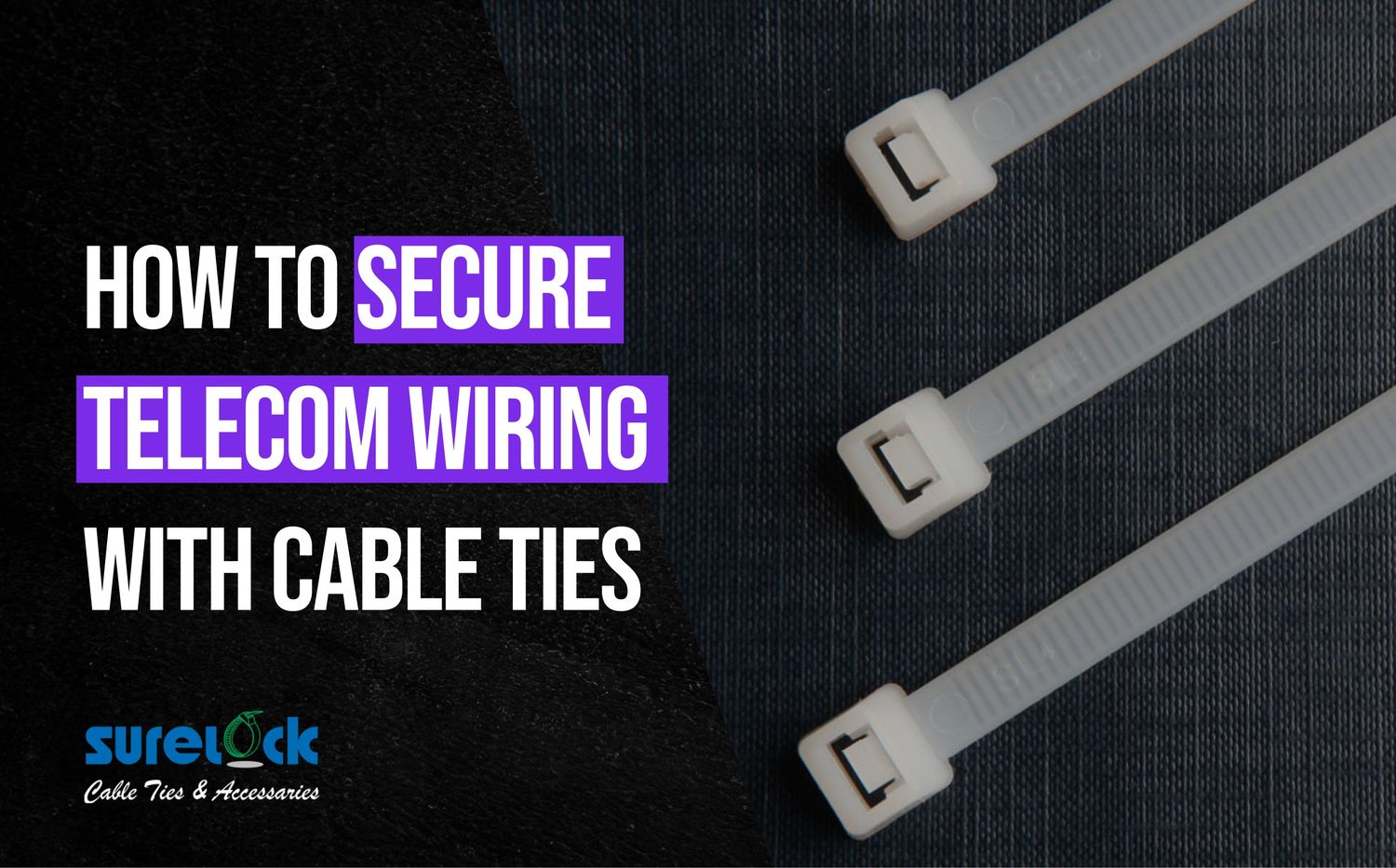
Are you risking network downtime and costly repairs by neglecting the right cable management in your telecom setup? In telecom, the quality of your wiring can directly impact performance. Disorganized cables create a mess and lead to costly disruptions, maintenance headaches, and even safety hazards.
Cable ties offer a simple yet powerful solution to secure your wiring. They prevent tangling, minimize damage, and improve airflow. When used correctly, they reduce downtime and extend the lifespan of your equipment. But how do you use them correctly to secure telecom wiring?
In this blog, we’ll explore how to secure telecom wiring with cable ties. From choosing the right type to a step-by-step guide on installation, we’ll cover everything you need to optimize your cable management and keep your telecom setup running smoothly.
Why Properly Securing Telecom Wiring Matters?
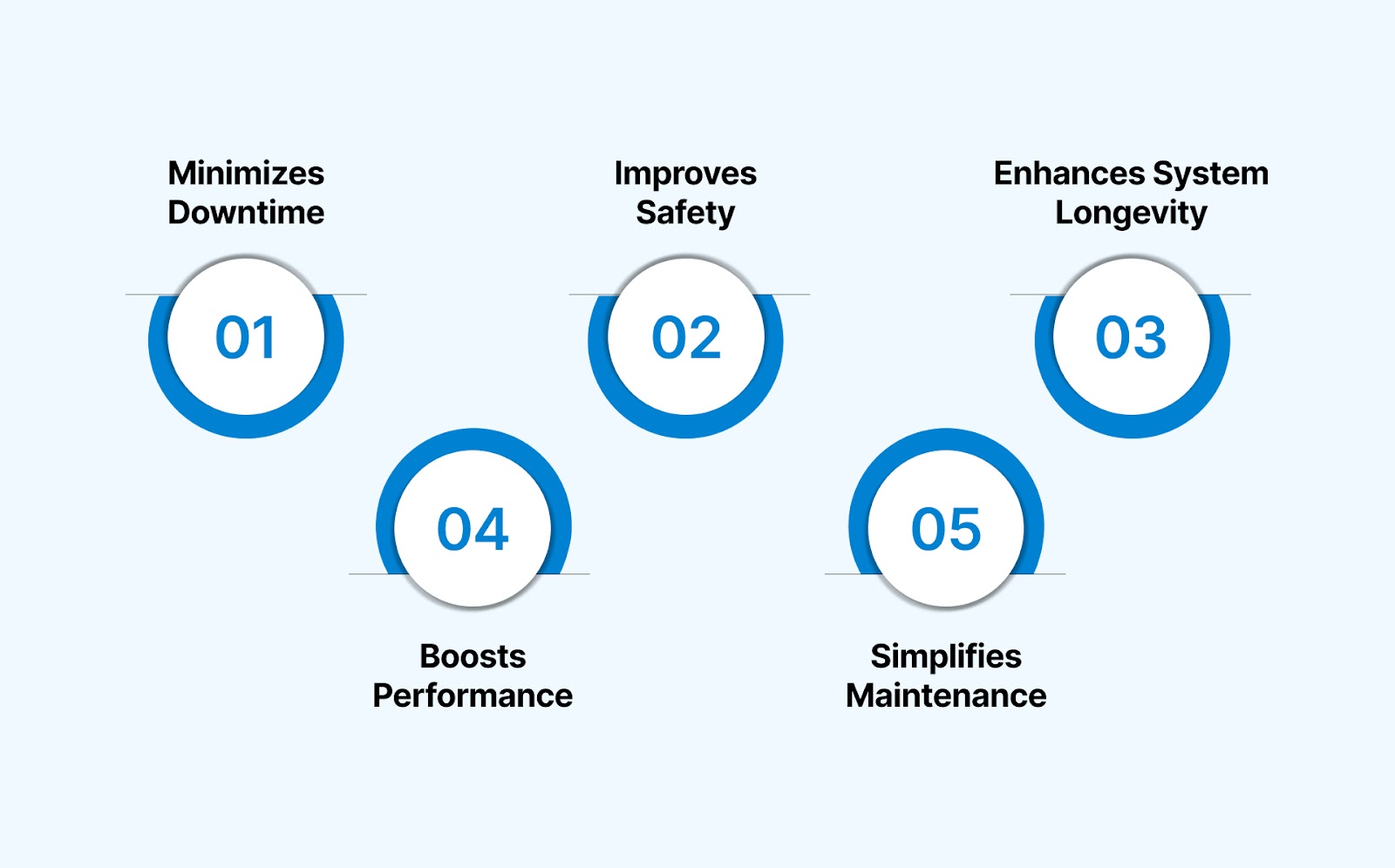
In telecom, the efficiency of your network depends not just on the equipment but also on how well the cables are managed. Properly secured wiring is often overlooked, but it plays a crucial role in maintaining system integrity, reducing risks, and ensuring smooth operations.
Here’s why securing your telecom wiring is non-negotiable:
- Minimizes Downtime: Loose or disorganized cables increase the risk of accidental unplugging or damage, causing costly network downtime.
- Improves Safety: Proper cable management reduces fire hazards, trip risks, and electrical shorts, keeping both your team and equipment safe.
- Enhances System Longevity: Well-secured cables prevent wear and tear, extending the lifespan of your equipment and reducing the need for frequent repairs.
- Boosts Performance: Tangles or poorly managed cables can cause signal interference, degrading network speed and reliability.
- Simplifies Maintenance: Organized cables make locating and fixing issues quickly easier, minimizing disruption during repairs or upgrades.
Proper cable management is all about protecting your investment and ensuring your telecom infrastructure runs at its best.
Now that we understand the importance of secure wiring, let’s examine the different types of cable ties ideal for telecom applications.
Types of Cable Ties Suitable for Telecom Wiring
When it comes to securing telecom wiring, cable ties are essential tools that help keep cables organized, secure, and properly managed. Each type of cable tie serves a different purpose, ensuring that the wiring stays in place while maintaining system integrity.
Here are the most common types of cable ties suitable for telecom applications:
- Non-Releasable Cable Ties: These cable ties are an economical and versatile method for cable/wire bunching. They feature a self-locking, one-piece construction and ensure fast and easy installation. Once locked, they cannot be opened or reused, making them a non-releasable solution.
- UV Resistant Cable Ties: Designed for outdoor cable bunching applications, these self-locking, non-releasable cable ties offer an economical and versatile solution. Made from UV-resistant nylon, they have an extended lifespan in outdoor conditions.
- Non-Releasable Value Series Cable Ties UV Black: These low-cost, UV-resistant cable ties are perfect for outdoor cable bunching applications. Made from nylon, they offer extended durability in outdoor climates. They provide excellent tensile strength and resistance to environmental factors.
- Tag Tie: This tie is commonly used for tying and identifying cable bundles. It allows for simple identification and securing of bundles in one step. Laser marking is possible, and manual or temporary marking can be done with a pen.
- Inside Vertical Tag Tie: Used for tying and identifying cable bundles, the inside vertical tag tie simplifies identification and securing in one step. It allows for laser marking and manual or temporary marking with a pen.
- Outside Tag Tie: Used for tying and identifying cable bundles, the outside tag tie offers simple identification and securing in one step. Laser marking and manual or temporary marking with a pen are possible.
- Double Loop Tie: This tie is ideal for tying parallel routing cables or packing bags. It allows the separation of bundles with just one cable and accommodates different diameter bundles.
- Double Lock Tie: Designed for securing and bundling cables in the utility and construction industries. This tie provides better tensile strength than standard ties. The outer-side serrations eliminate the risk of damaging cables, and the double locking head ensures a firm grip without slipping.
- Hook 'n' Loop New Wrap Tie (Back to Back): Used for sensitive cable bunching that doesn’t require industrial strength. The slotted head ensures easy application, offering a convenient solution for less demanding cable bundling needs.
Each cable tie is designed to meet different needs within telecom wiring, providing secure, long-lasting, and organized cable management across your infrastructure.
At Surelock, we provide a comprehensive range of cable ties—including UV-resistant, heat-stabilized, and fire-retardant options—tailored for the most demanding telecom environments. Explore our products to find the perfect fit for your wiring needs.
Having covered the different types of cable ties, let's dive into how to choose the right one for your telecom wiring needs.
Choosing the Right Cable Ties for Telecom Wiring
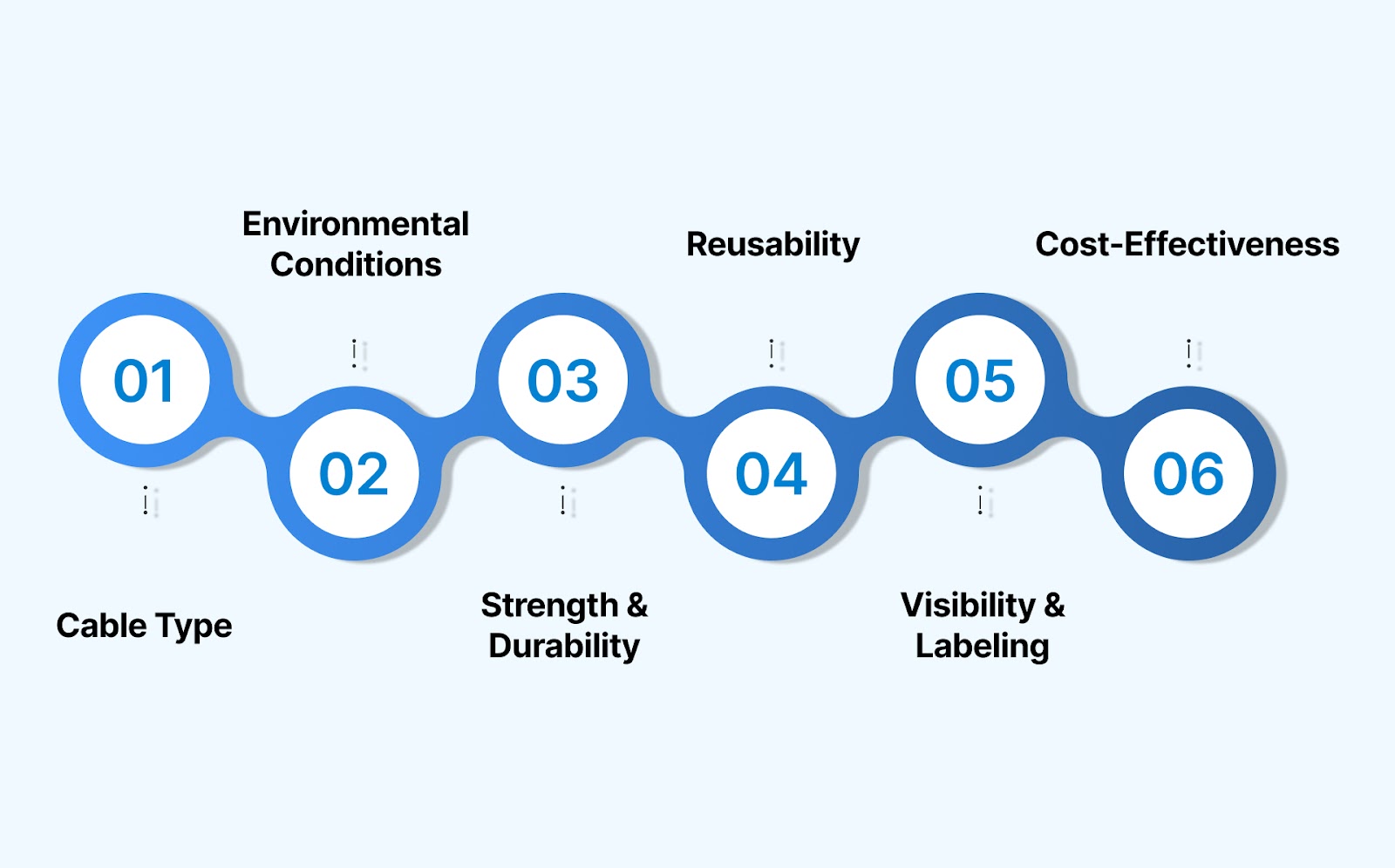
Selecting the proper cable ties for telecom wiring is crucial to ensuring the system remains organized, efficient, and durable. With various types available, factors like the environment, cable type, and installation requirements must be considered to make the best choice.
Here’s how to make the right selection:
- Cable Type: Consider the size, weight, and flexibility of bundled cables. Different types of cables require ties with varying strengths to prevent damage and provide proper support.
- Environmental Conditions: Evaluate the installation environment. For cables exposed to sunlight, select ties that are resistant to UV degradation.
- Strength and Durability: Choose ties that can withstand the weight and stress of the cables. For heavy-duty applications, select ties that offer added strength and security.
- Reusability: If adjustments to cables are needed, select ties that allow for easy removal or repositioning, offering flexibility for future changes.
- Visibility and Labeling: If labeling is required, use ties that provide clear identification, making future maintenance and upgrades easier.
- Cost-Effectiveness: Consider your budget and installation scale. Select ties that balance affordability with durability and security.
Considering these key factors, you can confidently choose the right cable ties to secure your telecom wiring and ensure a reliable, efficient, and safe setup.
With a clear understanding of how to choose the right cable tie, let’s walk through a step-by-step guide for securely fastening your telecom wiring.
Also read: Top Zip Ties for All Uses: Selection and Buying Guide
Step-by-Step Guide: How to Secure Telecom Wiring with Cable Ties
Properly securing telecom wiring with cable ties ensures a safe, organized, and efficient system. Following these simple steps, you can avoid downtime, prevent damage, and provide a clean, reliable cable setup. Here's a step-by-step guide to securing your telecom wiring effectively.
1. Gather Your Materials
Before you begin, ensure you have all the necessary materials. Having everything ready will make the process smoother and more efficient.
- Nylon cable ties (zip ties)
- Cables to be secured
- Tie Tensioning / Cutting Tool (for trimming excess ties)
- Optional: Cable mounts or clips for additional support
2. Organize Your Cables
Take the time to properly organize your cables before securing them. This step will help keep the process neat and prevent confusion later on. Untangle any knots and arrange the cables in a way that makes sense for your setup, whether by function or location.
3. Select the Right Size of Cable Tie
Choosing the right cable tie size ensures a secure and organized setup. Using too small or too large ties can lead to inefficient management or cable damage. Here's a table showing the recommended sizes based on cable bundle diameter:
Heavy-duty cable bundles for industrial use
4. Position the Cable Tie
Once you’ve selected the appropriate size, place the cable tie around the bundle. Thread the tie through its head, ensuring the tapered end faces the cables. Position the tie around the cables at the desired location, leaving a small gap between the cables to prevent overtightening.
5. Secure the Cables
Pull the tapered end of the cable tie to firmly tighten it around the cables. Be cautious not to pull too hard, as this can damage or strain the cables. Once the tie is snug, insert the tapered end into the head of the tie to lock it in place securely.
6. Trim Excess Material
After securing the cables, use a cutting tool to trim off the excess material from the tie. Make sure to leave a small portion of the tie to ensure it stays in place. This step improves the appearance and eliminates any sharp ends that could pose a risk.
7. Space the Cable Ties
It’s important to space the cable ties evenly along the cable bundle. This ensures the cables stay organized and prevents any sagging or separation. Generally, place ties about 6 to 12 inches apart, adjusting the spacing based on the bundle’s size and weight. For vertical runs, use tighter spacing, around 4 to 6 inches.
8. Test and Adjust
Once all the cables are secured, gently tug on them to ensure they are firmly in place. Adjust the tightness of the ties if necessary to make sure everything is snug and secure without causing damage.
This step-by-step process ensures that your telecom wiring remains secure, organized, and protected.
Since the process of securing wiring in place is clear, let's examine some common applications of cable ties within the telecommunications sector.
Typical Applications of Cable Ties in Telecommunications
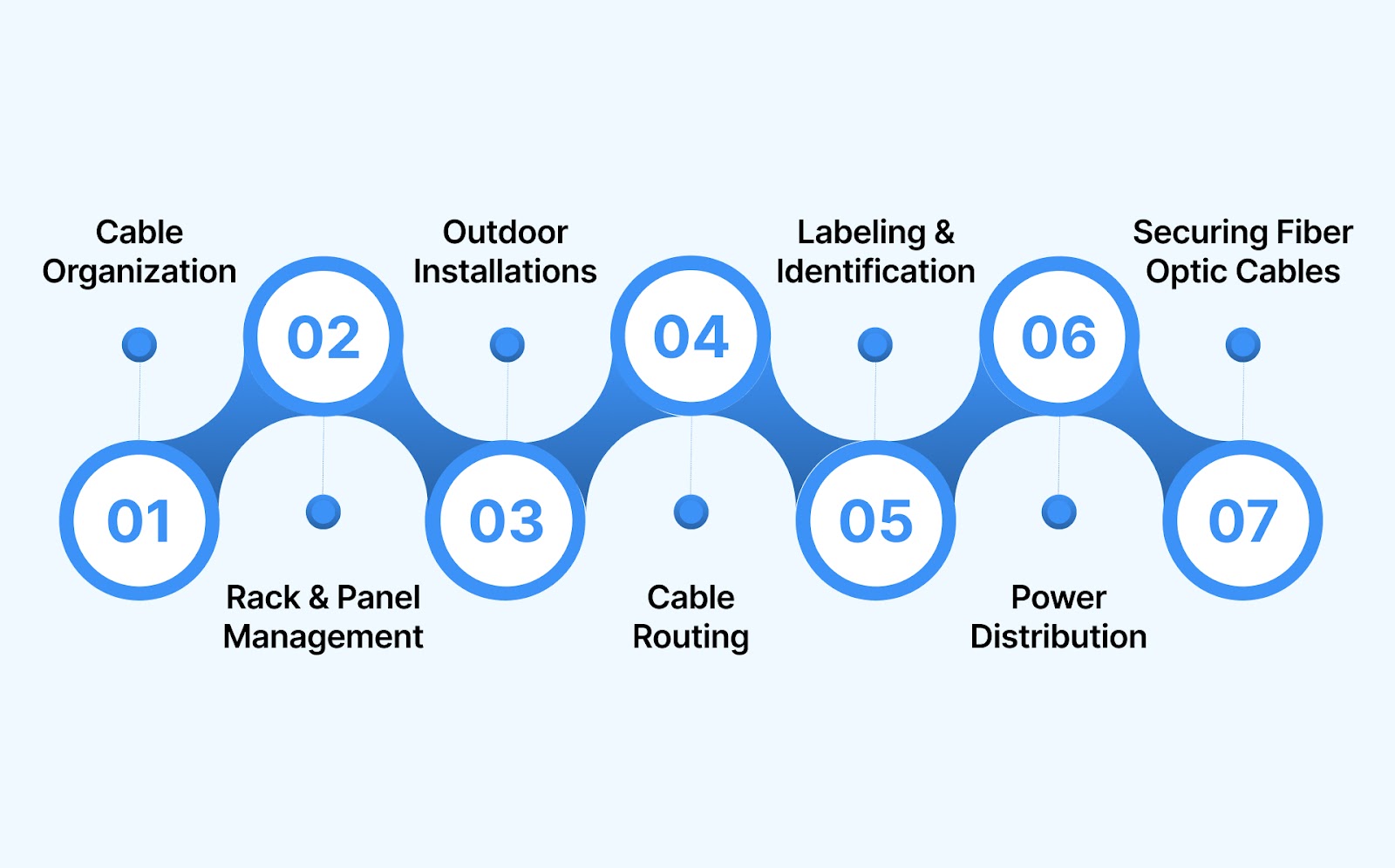
Cable ties are an essential tool in the telecom industry, offering secure, organized, and efficient cable management.
Here are some of the most common applications of cable ties in telecommunications:
- Cable Organization: Cable ties are used to bundle and organize telecom wires, reducing tangling and ensuring a tidy, manageable system.
- Rack and Panel Management: In server rooms and telecom equipment panels, cable ties help maintain organized cable runs, preventing cables from getting snagged or damaged.
- Outdoor Installations: UV-resistant cable ties are widely used for securing cables in outdoor telecom setups, such as cell towers or satellite dishes, where exposure to sun and weather is a concern.
- Cable Routing: In telecom installations, cable ties route cables through cable trays, walls, or ceilings, ensuring they stay securely in place without interfering with airflow or access points.
- Labeling and Identification: Cable ties with integrated tags or labels allow telecom technicians to quickly identify cables in complex setups, aiding in maintenance and troubleshooting.
- Power Distribution: Heavy-duty cable ties are used to secure high-voltage or power cables, ensuring they remain firmly in place in telecom power supplies or backup systems.
- Securing Fiber Optic Cables: Fiber optic cables, which are sensitive and fragile, are often secured with cable ties designed to prevent tension and stress that could damage the fibers.
By effectively using cable ties, telecom professionals can streamline installations, enhance network reliability, and simplify maintenance tasks.
Having explored the common uses, let’s now look at the best practices for keeping your telecom wiring organized and secure.
Best Practices for Telecom Cable Management
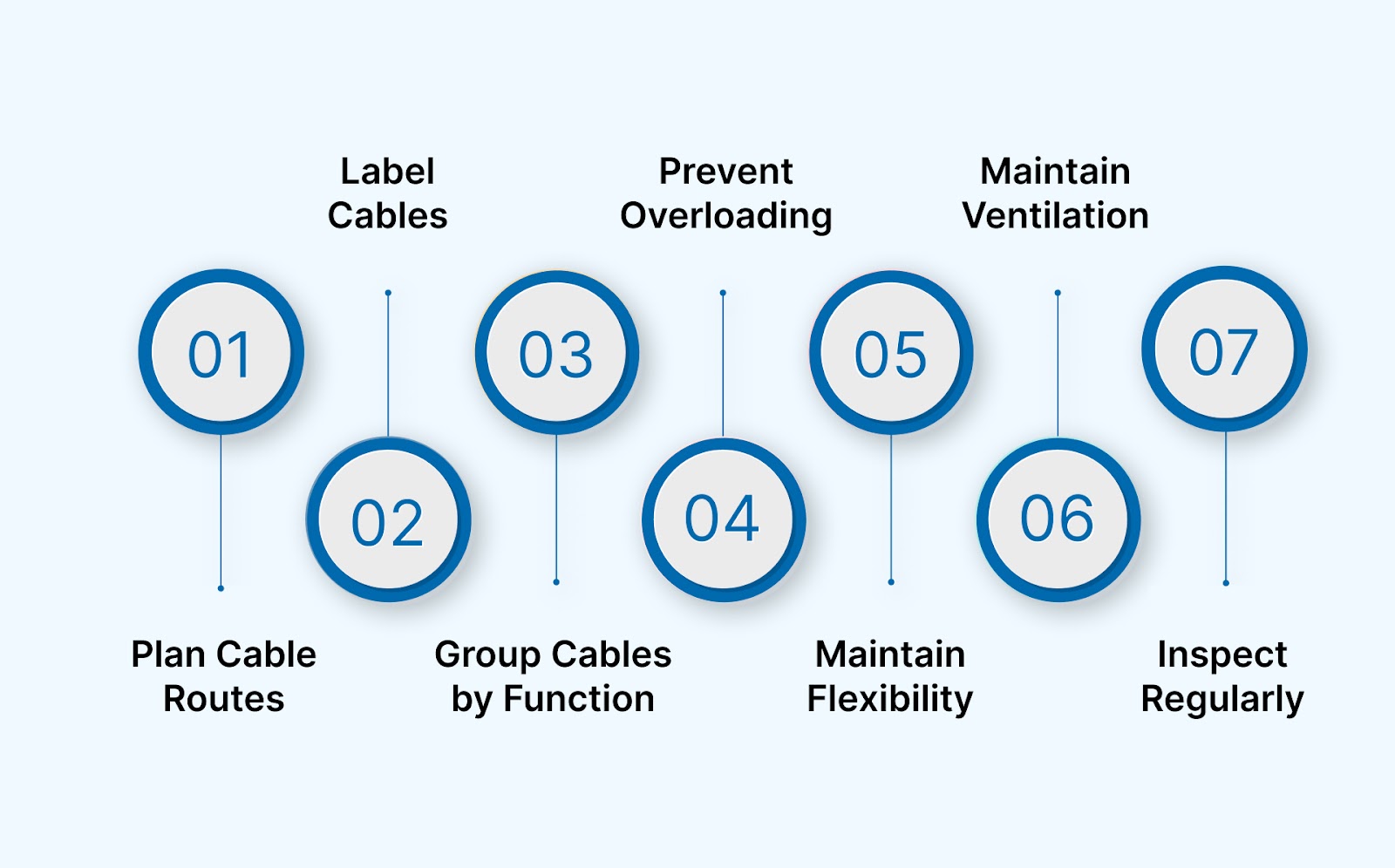
Effective cable management is crucial for maintaining a reliable, efficient telecom network. Proper organization improves performance and reduces the risk of costly repairs and downtime. Here are some best practices to ensure optimal cable management in telecom setups:
- Plan Cable Routes: Map out clear, organized cable routes before installation. This minimizes tangling and ensures cables are easily accessible for future maintenance.
- Label Cables: Label cables with clear, legible tags using tag ties to help identify their purpose. This simplifies troubleshooting and maintenance.
- Group Cables by Function: Bundle cables based on their function (e.g., power cables, data cables). This prevents interference and allows for more efficient organization.
- Avoid Overloading Cable Trays: Never overload cable trays or racks. Overcrowded trays can damage cables, restrict airflow, and increase the risk of overheating.
- Maintain Flexibility: Leave slack in cables to accommodate future changes or adjustments. This helps avoid stress on cables and ensures ease of modification when necessary.
- Ensure Adequate Ventilation: Avoid bundling too many power-carrying cables together. Heat buildup can reduce the performance and lifespan of your network.
- Inspect Regularly: Periodically check the cable management system for any signs of wear, loose ties, or cable damage. Regular maintenance keeps your system running smoothly.
Adhering to these best practices can ensure that your telecom cables stay organized, secure, and ready for optimal performance.
Next, let’s explore the essential tools and accessories that can enhance your cable management system.
Essential Tools and Accessories for Telecom Cable Management
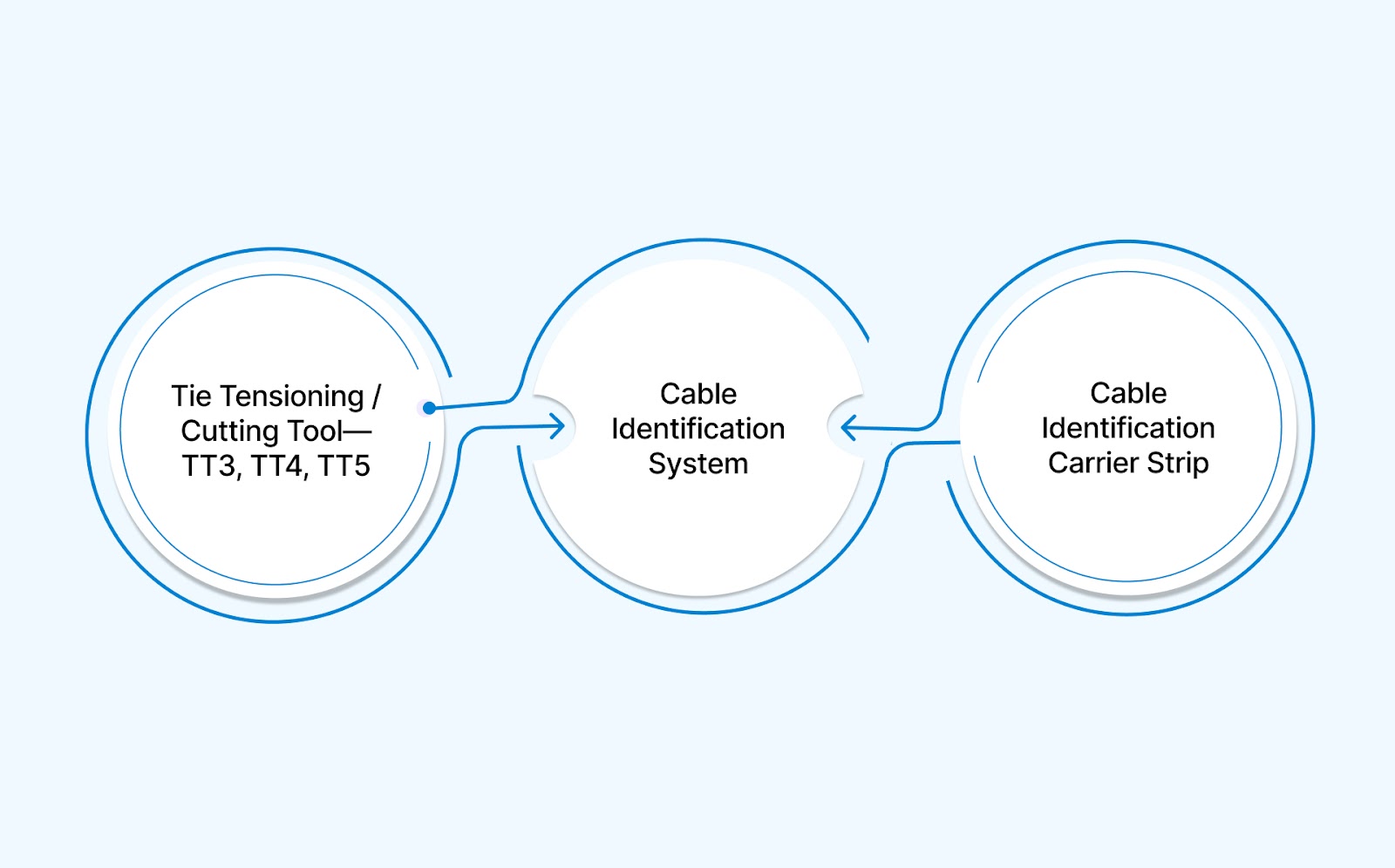
To ensure that your telecom wiring remains secure, organized, and easily maintainable, using the right tools and accessories is just as important as selecting the proper cable ties. Here are some essential tools and accessories that can enhance your cable management system:
- Tie Tensioning / Cutting Tool—TT3, TT4, TT5: These tools are designed to quickly and efficiently tension and cut cable ties.
- Cable Identification System: This system is designed for the identification of cable bundles. It is to be used with cable ties up to 4.8 mm in width, providing an effective solution for organizing and labeling cable bundles.
- Cable Identification Carrier Strip: This carrier strip is used to identify cable and wire bundles. It is compatible with ties up to 4.8 mm in width and works with pre-marked oval-shaped cable markers ERT-5 and ERT-6, offering a streamlined way to mark and organize cables.
Incorporating these tools and accessories into your telecom cable management will enhance the functionality, security, and organization of your network infrastructure.
Conclusion
Securing telecom wiring with cable ties is essential for ensuring a tidy, safe, and efficient network. By choosing the right cable ties, organizing your cables, and following best practices, you can prevent potential issues and enhance the longevity of your system.
At Surelock, we specialize in providing a wide range of high-quality cable ties, designed to meet the demands of various environments. With options like UV-resistant, heat-stabilized, and fire-retardant ties, we ensure your cables stay secure and perform at their best, even in the most challenging conditions.



